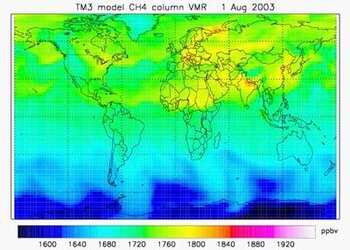Pollution hunting in the light and shadows
Since March 2002, SCIAMACHY has been chasing our planet's pollution. The latest edition of the EuroNews 'Space' magazine has travelled to Bremen to meet the team behind this science instrument launched aboard Envisat, ESA's Earth observation satellite.
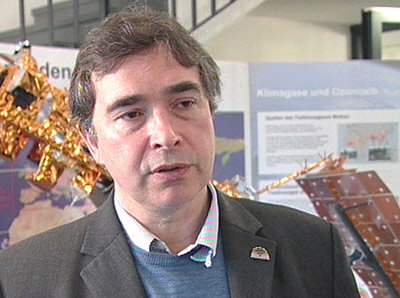
"The name, SCIAMACHY, comes from the Greek work meaning hunting shadows. And that is what we are doing, hunting light and shadows." John Burrows, director of the Institute of Remote Sensing / Environmental Physics at the University of Bremen in Germany, conceived the SCIAMACHY instrument to track the "shadows" created by atmospheric pollution.
"I think that until the industrial revolution, mankind was like a stowaway on planet Earth," explains John Burrows. "But since then man has crept out on the surface, producing pollution on such a scale that we are now changing the behaviour of the atmosphere in a significant way."
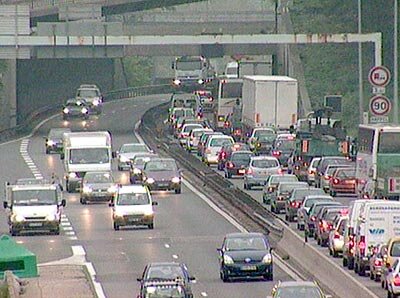
"By observing from space, we can investigate what is happening. Pollution is being generated in the troposphere, the lower atmosphere, and is then moved around by the winds. We are observing an increasing amount of pollution which is directly proportional to population growth and to increasing standards of living."
SCIAMACHY was included as part of the European Space Agency's ambitious ENVISAT mission, conceived in the 90s to study and understand the Earth's environment. Since its launch from Kourou, its radar and battery of ten science instruments have been scanning the ground and atmosphere at all wavelengths.
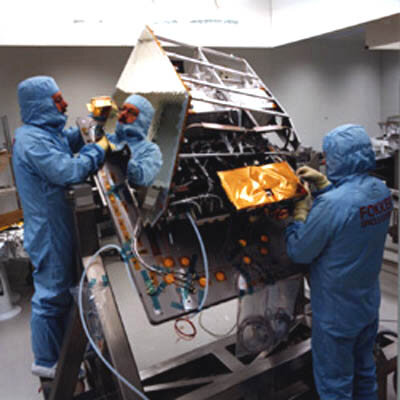
Using a half-sized model of SCIAMACHY which stands proudly at the University of Bremen, John Burrows explained how the instrument functions. "It collects light in several ways. Firstly looking at an angle to obtain scattered sunlight coming from the atmosphere. A second method is to look at up-welling radiation from the nadir, straight up through the atmosphere."
"This light is directed to a complex spectrometer. We then can determine the way we are looking, the amounts of gases that are present and so build up a three-dimensional picture of what is going on in the atmosphere."
The SCIAMACHY team of investigators are interested in all kinds of gases, particularly those which contribute to the "greenhouse effect". For example methane stemming from biological activity – marshlands or certain agricultural crops – is one of the principal factors responsible for global warming, together with carbon dioxide produced by industrial activities, forest fires or volcanoes.
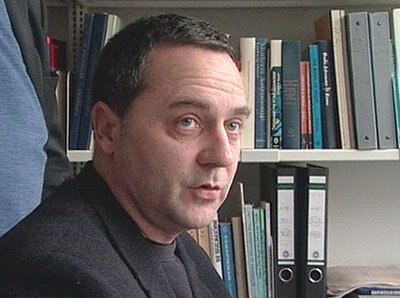
"SCIAMACHY is the first instrument that can actually measure carbon dioxide in the atmosphere at the precise locations we live at," says Michael Buchwitz, a member of the team. "What we currently know is that of the 7 gigatons of carbon dioxide which man releases into the atmosphere, only half remains there, and the rest falls back into the vegetation and oceans where it is stored. The question is where exactly are the sinks where it is stored and how do these sinks change with time?
Many land-based stations help confirm the instrument's measurements from space. One of these is at the University site. It works the same way, by measuring the changes in the light coming from the Sun, the Moon, or even stars. The spectra that are obtained allow measurement of the quantities of gases which are present above the town of Bremen. These are then correlated with those obtained as the satellite passes overhead.
To further validate the SCIAMACHY space-based observations, a full size version of the instrument is also used. "Using exactly the same measurement principles, we measure the same gas species as the satellite, but down on the ground," details Andreas Richter, who works on the SCIAMACHY data. "If the measurements agree, we know the satellite is doing well, if not we must understand the reasons for the differences."
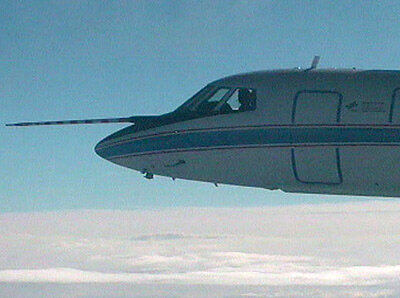
The SCIAMACHY spectrometer can track all kinds of shadows, like those of long-lived greenhouse gases, or short-lived ones such as halogen containing radicals. Further validations of the space measurements are also carried out using mobile stations, including planes. For example, a Falcon jet belonging to the German Space Agency DLR is regularly used.
"We are however still at a research and validation stage," concludes John Burrows. "Using ground stations and planes is important to establish the credibility of the data we are collecting from space. But I feel that these data are already showing great potential in very diverse fields. For instance, to arbitrate when nations disagree over the sources and amounts of pollution."

SCIAMACHY, together with the other Envisat instruments, is thus contributing to a global understanding of planet Earth. The chaser of shadows and light is indeed proving to be a precious tool for our future.
The SCIAMACHY instrument on-board Envisat was funded by the German government through the German Aerospace Centre (DLR), the Dutch government through the Netherlands Agency for Aerospace Programmes (NIVR) and also the Belgian government through the Belgian Institute for Space Aeronomy (BIRA-IASB).
EuroNews
EuroNews is a key medium for delivering international information with a European point of view. Broadcast in 79 countries, EuroNews reaches 144 million households in Europe, the Middle East, Africa, Central Asia and North and Latin America via cable, digital satellite and through terrestrial channels. This Space Magazine is produced and broadcast every two weeks, with a new programme starting every second Friday. Each magazine is four minutes long and broadcast 21 times in one week, including evening prime time on Fridays and Saturdays, in order to reach a maximum audience.
Broadcast times
|





